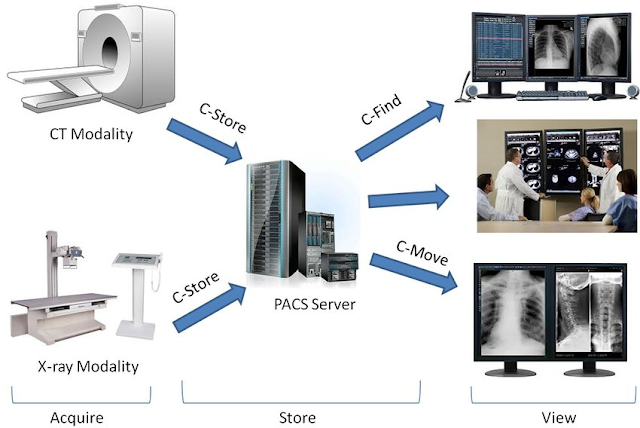Keeping Patient Images Safe: Your Guide to Secure Medical Storage
When you store sensitive patient scans and images, you're handling some of the most private health information possible.
Modern medical imaging
data storage needs to balance security with accessibility, ensuring doctors can
quickly access what they need while keeping patient data safe from breaches.
The
stakes are high—a single breach costs healthcare organizations an average of
$10.1 million, according to IBM's 2023 Cost of Data Breach Report. More
importantly, your patients trust you with their most personal information.
Key Components of Secure Medical Image Storage
A truly
secure system needs several layers of protection working together. Here's what
your storage solution should include:
1. Encryption That Actually Works
Strong encryption transforms readable data
into protected code
that can only be unlocked with the right key. You should implement:
● At-rest encryption to protect stored images
● In-transit encryption using TLS 1.3 to safeguard data moving through your network
Remember:
Without proper encryption, even password-protected systems can be vulnerable to
sophisticated attacks.
2. Access Controls That Make Sense
Not
everyone needs access to every image. Your system should let you:
● Create role-based permissions that match real
job responsibilities
● Set time-limited access for temporary staff or
consultants
● Implement multi-factor authentication for
sensitive areas
● Track and log who accessed what and when
3. Compliance With Healthcare
Standards
Your
storage solution must comply with relevant regulations based on your location:
|
Region |
Key Regulations |
Main Requirements |
|
United
States |
HIPAA |
Audit
controls, access authorization, data integrity |
|
European
Union |
GDPR |
Patient
consent, data minimization, breach notification |
|
Global |
ISO
27001 |
Risk
assessment, security testing, incident management |
Storage
Options You Should Consider
Cloud-Based Solutions
Cloud storage offers flexibility and
scalability that
on-premises systems can't match. You can:
● Pay only for the storage you actually use
● Scale up quickly as your image library grows
● Access your images from anywhere with proper
authentication
However,
you'll need to carefully vet your provider's security practices and ensure they
offer healthcare-specific compliance features.
Hybrid Approaches
Many
healthcare organizations find a mix of
local and cloud storage works best. You might:
● Keep recent images on fast local storage for
quick access
● Archive older images to the cloud for
long-term retention
● Maintain critical backups both locally and in
the cloud for redundancy
Practical
Implementation Steps
1. Assess Your Current Situation
Before
making changes, understand what you're working with:
● What types of images do you store and in what
formats?
● Who needs access to these images and how
quickly?
● What are your current security
vulnerabilities?
2. Plan Your Migration Carefully
Moving
medical images requires careful planning:
● Schedule migrations during low-usage periods to minimize disruption
● Verify all metadata remains intact after
transfer
● Test retrieval processes thoroughly before
going live
3. Train Your Team
Even the
best systems fail when people don't understand them. Make sure your team:
● Knows how to use the new system correctly
● Understands the importance of security
protocols
● Can recognize potential security threats
The most
secure storage system becomes useless if staff bypass security measures out of
frustration or lack of training.
Maintaining
Long-Term Security
Security
isn't a one-time setup but an ongoing process:
- Schedule regular security audits to identify new vulnerabilities
- Update encryption standards as technology
evolves
- Review access logs to spot unusual
patterns
- Test your disaster recovery plan
regularly
Final
Thoughts
Implementing
secure storage for medical images doesn't have to be overwhelming when you
break it down into manageable steps.
Focus on
creating layers of protection while keeping the system usable for your team.
By taking a thoughtful approach to medical imaging data storage, you protect not just information but also patient trust and your organization's reputation.





Comments
Post a Comment